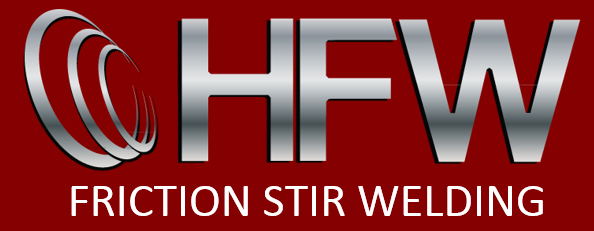FAQ
What is friction stir welding?
Friction stir welding is a solid-state joining process that uses frictional heat. Using this method creates a high-strength, high-quality weld. Visit our friction stir welding page to learn more.
Who invented friction stir welding?
Friction Stir Welding (FSW) was invented in 1991, by Wayne Thomas, at The Welding Institute (TWI). This process overcomes many of the problems associated with traditional joining techniques. Visit our friction stir welding page to learn more.
What materials can be friction stir welded?
Initially friction stir welding was confined to relatively soft materials such as lead, zinc, magnesium and a range of aluminum alloys. More recently, copper, titanium, low carbon ferritic steel, alloy steels, stainless steels and nickel alloys have been welded. In theory, any material which can be hot worked should be weldable by this process. However, the pin tool material is often the limiting factor, rather than the material being welded. Visit our materials compatibility page to learn which materials can be welded together.
How does friction stir welding compare with other processes with respect to cost?
Friction stir welding of aluminium alloys has been cited by many users as a cost-saving process. This is in part due to the elimination of consumable costs, but is also due to the ability to make most welds in one or two passes, even in thick material. FSW is also an efficient process in terms of energy consumption, which can also lead to significant cost savings. The fully automated nature of the process also reduces labor costs and the possibility of defects. Visit our friction stir welding page to learn more.
What are the advantages of friction welding?
There are many advantages with this joining process including the absence of toxic fumes or splatter, no consumables are required to produce the weld, and it is a process that can be easily automated which makes it perfect for industrial use. Problems such as, solidification cracking, porosity, solute redistribution are not a problem when friction stir welding is used. There are fewer defects when using friction stir welding. This process is also a better welding process for the environment. Visit our friction stir welding page to learn more,
What are some common applications for friction stir welding?
Friction stir welding has been widely adopted in many branches of manufacturing and engineering. HFW Solutions provides this technology for many industries including aerospace, hybrid electric vehicle, marine, rail, thermal, and many more. Visit our manufacturing page to learn more about the industries we serve and the products we can make.
Why is friction stir welding used?
Friction stir welding is primarily used on extruded aluminum and particularly for structures which need very high weld strength. FSW is also found in modern shipbuilding, trains, hybrid electric vehicle, and aerospace applications. Visit our friction stir welding page to learn more.
What is meant by friction stir processing?
Friction stir processing (FSP) is a method of changing the properties of a metal through intense, localized plastic deformation. This deformation is produced by forcibly inserting a non-consumable tool into the material, and revolving the tool in a stirring motion as it is pushed laterally through the material. This type of processing gives superior strength and formability to the product. Visit our friction stir welding page to learn more.
